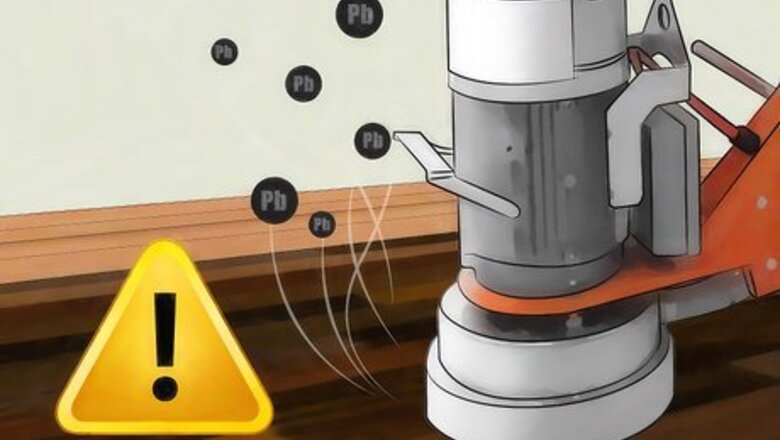
views
Initial Sanding

Consider the chance of lead. Many older homes contain lead in the floor finishes. This practice ended in 1978 in the US, the 1990s in Canada and Australia, and the 1920s or earlier for most other Western countries. If your house was built before the ban in your country, consider hiring a floor finisher with lead certification to test your floor and refinish it safely. If you do decide to sand an old floor yourself, take these precautions: Cover vents, doorways, and light fixtures with plastic sheeting. This is not a bad idea for any sanding job, to make dust cleanup easier. Attach a HEPA-filter vacuum to the sander. A "dust free" setup is not actually dust free, but it helps. Wear a HEPA-filter respirator and old clothes. Do not wear the clothes outside the work area. Keep pregnant women and children out of the house until the day's work is done and the area has been vacuumed with a HEPA-vac or wet/dry vac.
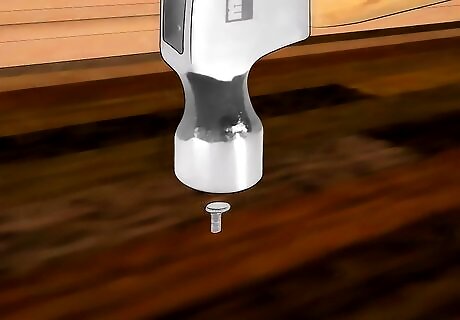
Check for nails and staples. Hammer in any nails that are sticking up. Remove any staples or metal fasteners from old flooring. These can tear the sandpaper on your machine.

Rent a drum sander. Ideally, find a rental store that will teach you how to use it. Check that the drum sander's rear wheel is tight, and that the drum stands flat or nearly flat on the floor. Blow out any dust from the machine before adding sandpaper. If your floor is flat with no noticeable warp, you may use a standing orbital sander instead (not a handheld one). This is easier to use without damaging the floor, but it tends to take longer.
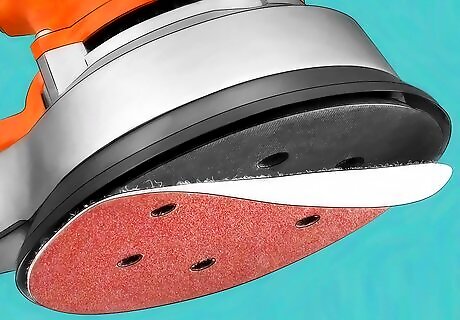
Install coarse grit sandpaper onto the sander. Load the coarse sandpaper around the drum so it is perfectly aligned, securing the trailing end of the paper, then the leading end. Some sanders secure this with screws, while others have a snap bar and may require sandpaper shims. For most floors, 36-grit sandpaper is a good place to start. If your floor does not have serious damage and only has a thin layer of finish, you may be able to skip this step and start with 60-grit sandpaper instead. You'll often need to even out the sandpaper by putting sandpaper shims in the drum's loading slot. Cloth-backed sandpaper is more expensive, but less likely to tear on the drum machine.
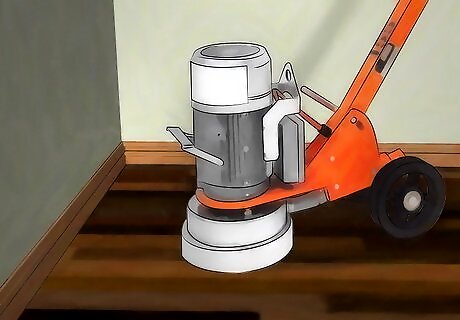
Practice on a hidden area. Choose a closet floor, or a spot that's normally covered by furniture. Lift the drum sander off the floor, and run it until it reaches full speed before lowering it. It will move immediately, so be prepared to start walking. Move at a steady pace, then lift the sander before you turn it off. Get the hang of this before you move to the rest of the floor. Turning the machine off or on while it is on the floor will leave a mark on your floor. If you get dust clouds, stop and make sure the dust bag is properly attached. A respirator or at least a dust mask is a good idea in any case. Eye and ear protection is also recommended. If you see a tight repeating pattern of marks — "chatter" — there is likely something wrong with the machine. Make sure the sandpaper is loaded flat, the belt is not worn or compressed, and the parts are tightly assembled.
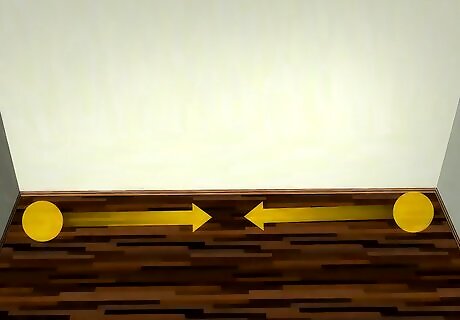
Decide where to start. Most machines are set up so one side of the drum is slightly lower than the other, and sands more aggressively. If this is the left side, start on the left wall. If this is the right side, start on the right wall.
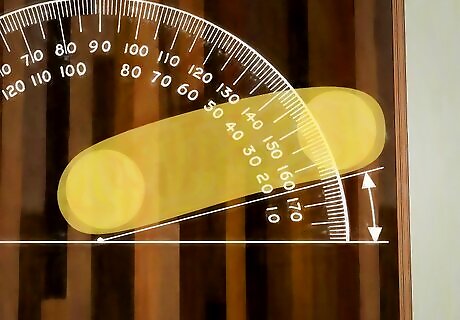
Sand at a slight angle to the grain. For the first stage of sanding, you can move at a 7 to 15 degree angle to the direction of the boards. This will help level slight variations in the floor. It also minimizes the chance of "dish out" or "waves," when a loose or uneven floor gets sanded more in some spots than others.
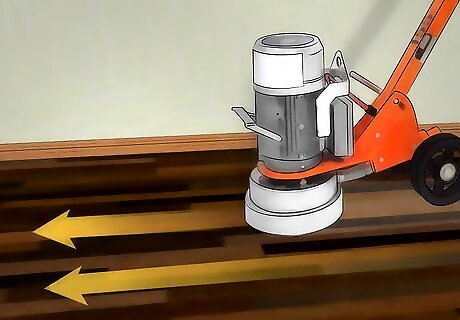
Move constantly as you sand. Sand the whole area at the same angle. Do not stay in one place, or the sander may eat through deeper than you intended. This coarse sanding should remove the old seal and level out uneven parts of the floor. Start at a brisk walking pace. If this doesn't seem to get through the old finish, slow down to a moderate pace. This is not a major concern with orbital sanders, which are not powerful enough to cause immediate damage when they stop in one spot.
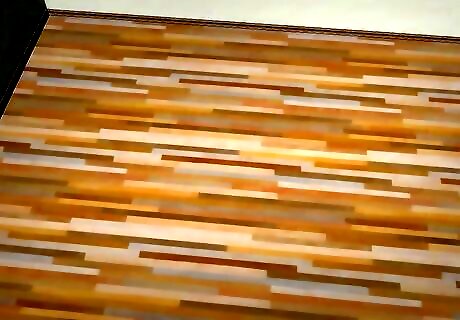
Continue until most of the floor is sanded. When you get to the wall, move the sander back to your starting point and slightly to the side, overlapping your first pass. Walk to the wall and repeat until the whole area in front of your is sanded. If you need to go over one spot more than once, lift the lever for a moment as you reverse direction. This will briefly raise the drum off the ground, avoiding a mark on the ground where it reversed. If you are sanding a large room, you will likely need to replace the sandpaper at least once. A drum sander cannot reach the edge of the wall. Just leave the edges unsanded for now — you'll use an edge sander for those areas later.
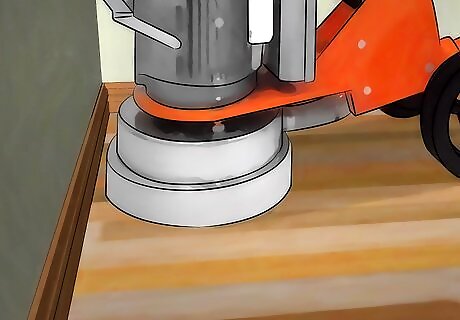
Finish the shorter side of the room. There is now an unsanded area at one end of the room, where you stood at the beginning of each pass. Turn around and sand this area moving along the same angle as before.
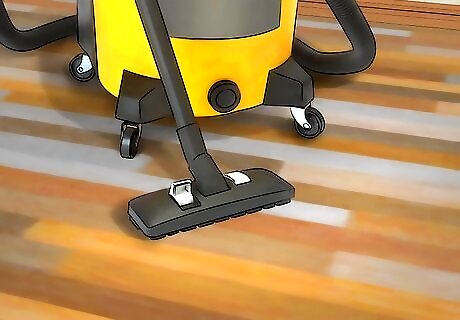
Vacuum the dust. Let the dust settle, then clean it up with a professional vacuum designed for fine dust. When choosing a machine to rent, look for one with soft wheels that won't leave a dent in your unfinished floor. Keep your respirator on until the dust is clear. Empty the sander's dust bags when they get half full.
Sanding the Floor Smooth
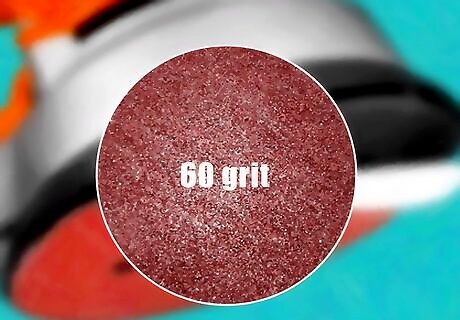
Switch to medium grit sandpaper. By now your floor will be free of the old finish, but many scratches may still be visible. Load 60-grit sandpaper onto your drum sander to deal with this problem. Ideally, use aluminum oxide (ALO) sandpaper loaded with medium tension. Never skip directly from coarse sandpaper to fine, such as 36 to 80. This can leave deep scratches in your floor.
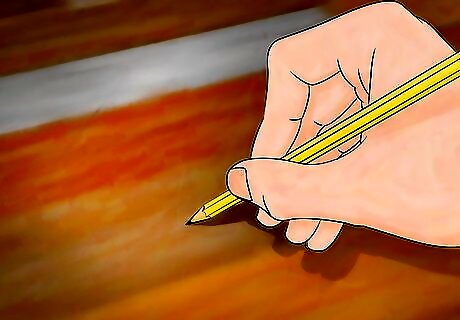
Sketch pencil marks on the floor (optional). At this stage it can be difficult to see how effective the sanding is. Try drawing light, zig-zag pencil marks across your floor. When the pencil marks have disappeared, you know you've sanded that area. You may use this technique on any of the finer grit sanding steps below as well.
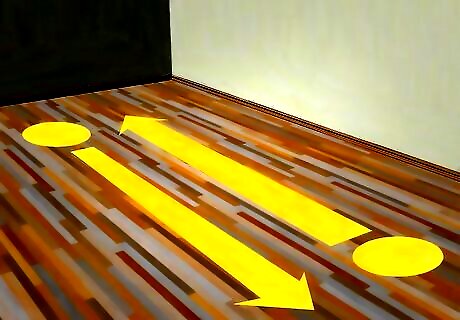
Start on the opposite side of the room. On your first pass you did a "long run" followed by a "short run" to fill in your starting point. Start from the opposite wall this time so your new "long run" and "short run" don't have the same dividing line. If you use the same pattern as before, that line may become visible, especially if you plan to stain the floor.

Sand along the grain. Do not sand on the same diagonal path as the first sanding job, or you may end up with stripes on your floor. Sand directly along the boards instead. As before, vacuum up dust once this stage is finished. Remember, never turn your sander on or off while it is in contact with the floor.

Buff with 80 grit sandpaper. This is easier and more effective with a floor buffer, but you can use a drum sander. This will remove the 60-grit scratches. Vacuum the floor again once you're done.
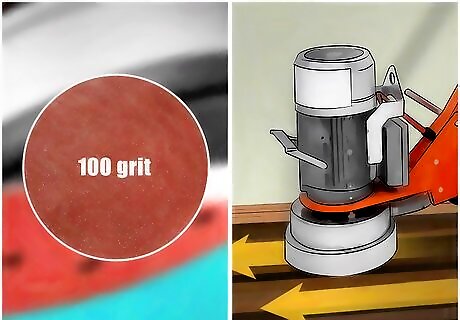
Finish certain floors with 100 grit paper. This is only necessary if you plan on staining the floor, or if your floor is made from maple or birch. The 80-grit scratches are more noticeable on these surfaces.
Sanding the Room's Edges
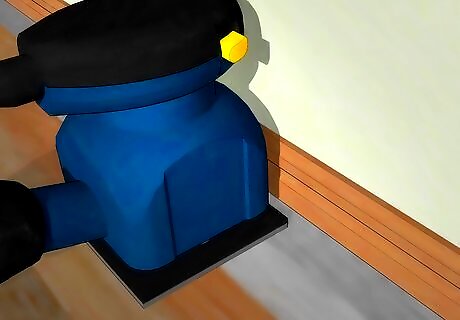
Use an edge sander. These handheld tools allow you to reach right against the edge of the wall. If using an orbital sander, you probably already reached the walls. In this case, you can skip this section, and remove the finish at the corners with any handheld sander.
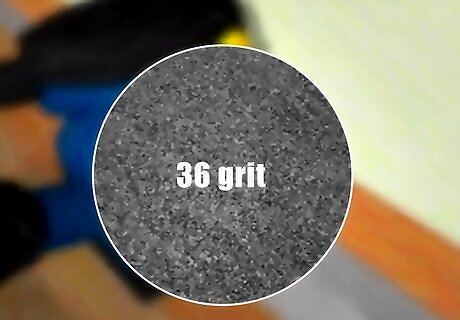
Start with 36-grit. For this small remaining area, you may be able to skip some of the steps you used on the whole floor. That said, you will need to start with a coarse grit to remove the old finish.
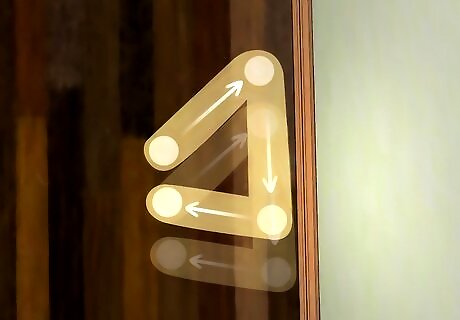
Sand in a clockwise zigzag pattern. Move the edge sander back and forth along the wall in small triangular movements. This is less likely to leave marks than a side-to-side motion. Most tools are designed so moving right (clockwise) along the wall is easier than the other direction.
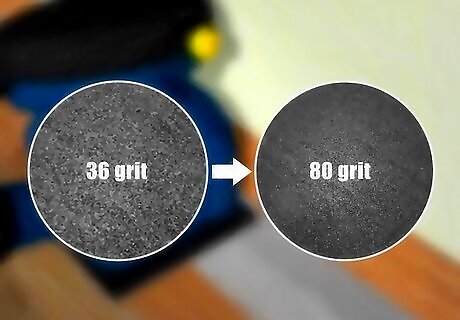
Repeat with finer sandpaper. You can now skip straight to 80-grit sandpaper. Sand carefully until the edge matches the rest of the floor. If you want to finish with 100-grit sandpaper, you'll need special techniques to avoid burning the floor and paper. You'll need a sander with a slow speed setting, and preferably an "open coat" sandpaper.

Vacuum up the dust. Your floor is now ready to be stained and/or waxed. Try to keep dirt, abrasives, and heavy objects off the floor until it is finished.




















Comments
0 comment